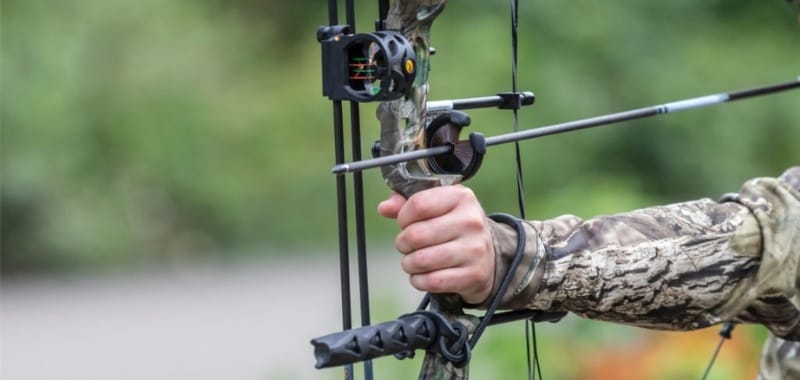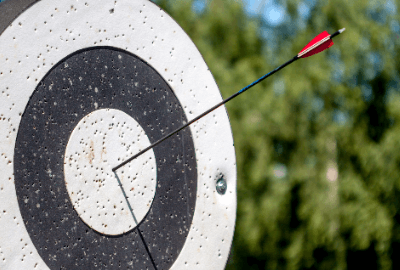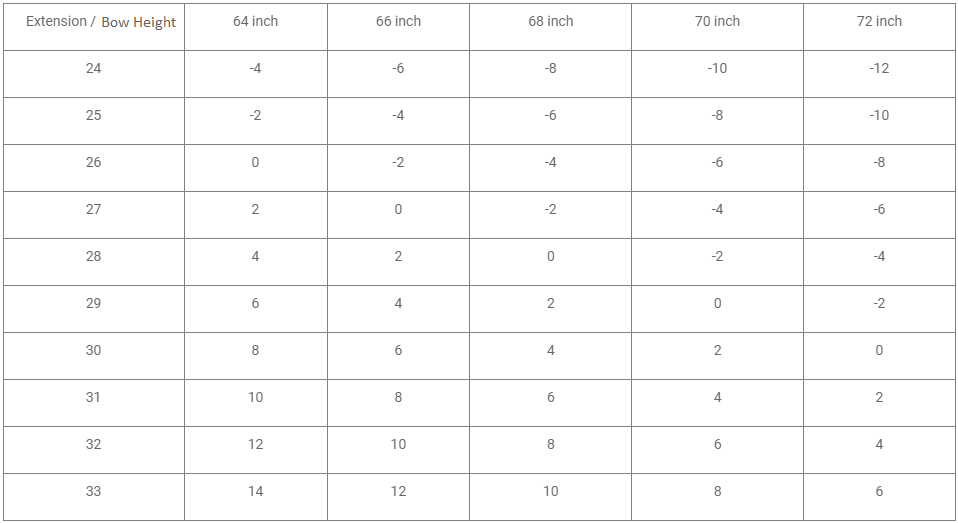
There is no doubt the technology deployed to build modern bows is more and more sophisticated. For example, you can then easily switch from indoor target shooting to 3D shooting. The problem is that all these things are useless if you can’t pick the right arrow to match your bow. And it’s much harder than most archers or hunters think. This is especially true if you are new to archery or bowhunting.
Whether you are an aspiring archer, a professional marksman, or simply curious about the world of archery, understanding the criteria for selecting a bow and arrow is essential. Embarking on the journey of selecting the right bow and arrow requires a balance between personal preferences, skill level, and intended use.
By examining the various facets of this ancient yet timeless practice, you can equip yourself with the knowledge needed to make informed choices and, ultimately, enhance your archery experience.
The Different Parts of an Arrow
A bow arrow has very specific parts and can be broken down into several distinct parts. Beginners can choose bow arrows that are already pre-assembled. On the other hand, experienced and professional shooters will prefer to assemble them by themselves to select each part of the arrow carefully.
The four parts of the arrow are important to know of many different characteristics. All these differences will therefore have a considerable impact on the overall performance of your shot.
- Nock: The Nock is the element located at the rear end of the arrow and rests against the rope when wrapping. Nock is often made of plastic and makes it possible to channel and transcribe the energy to the arrow during the release. Before choosing, make sure that the nock is durable and not easily broken down.
- Feathers: There are many types of feathers using the arrow. To be fixed on the tube, the 3 feathers serve as a rudder for the boom and allow it to have better stability in the air. They can be in natural or synthetic material but often have the same shape with a few exceptions.
- Tube and shaft: The tube of an arrow is the main part. It is the element that you will be able to customize and fix the other parts according to your needs. We can distinguish 4 main types of materials: wood, aluminum, carbon, and a mix between these last two materials. Each of them brings different specificities and advantages depending on the situation and your practice of archery.
- Point: it is established at the front end of the arrow, the point is the part that will penetrate the target. You have to make sure that it adapts according to your practice of archery. Indeed, a hunter will not use the same point as an archer practicing indoor shooting.

Final Thoughts
The choice of point, feathers, and notch will depend on the discipline of the practice. Arrow power holds significant importance when aiming for improved performance. Arrows are, of course, influenced by numerous factors, such as their final weight, shank length, and the environmental conditions in which you intend to shoot. Once you grasp these concepts and how they interact to optimize your shot, you can begin utilizing a system of metrics and charts to define the perfect setup for the situation and align it with your shooting style.
Bow Arrow Buying Guide
Now you know the arrow and its different parts, let’s take a look at the important criteria to consider when buying the best bow arrow.
Purpose of use
Like any leisure or sports equipment, the purchase of each accessory or material will depend on its user. Even if you have standard equipment that more or less adapts to all archery practitioners, it turns out that each person is different with their own body type and strength.
Length of the arrow
Length is the most important parameter of the compound bow arrow, you must define this according to your length. It is therefore important to know the exact data that we discuss in the power section below to be able to precisely define the ideal length of your arrow. However, when choosing the actual length at which you will cut your tubes, you will need to add 2 inches to take into account that the arrow is 2 inches beyond the shepherd.
Weight of the point and the final arrow
The next important factor that you need to consider is the weight of the boom. This is measured in grains (GPI for Grain Per Inch) and not in grams. The more weight it is, the more its speed will be reduced. However, a heavier-weight arrow will have a greater impact on the target. That is an important factor for hunters. This factor should therefore be adjusted according to your practice.
Increasing weight alone doesn’t necessarily translate to gaining power. Achieving the right balance is crucial, as an imbalance can impact your performance, leading to a loss of speed and precision. The tip weight typically falls within the range of 100 to 125 grains. This weight distribution also facilitates moving the center of gravity forward, enabling the tail to fulfill its role while ensuring the shaft remains adequately flexible.
Tube diameter
It is also important to know the diameter of your arrow tube if you want to be able to customize it with specific parts. There are indeed several diameters on the market depending on the material and brands. However, this value has very little influence on the performance of the boom.
Power of your bow
The power of your bow is an important parameter to consider before buying an arrow set. It also allows us to define the ideal spine. You can find this value on the limbs of your bow. It is also calculated according to your bow draw weight.
Refer to the power marked on the limbs and the following table Add or subtract the number of pounds indicated to the power marked on the branches to find the power drawn at your draw.

After determining the draw and the power, it is necessary to decide on the spine of the arrow.
Stiffness of arrow tube
The spine of an arrow is employed to ascertain its stiffness, reflecting the tube’s ability to deform under the stress of a weight placed in its middle. Typically represented by numbers ranging from 800 (softest) to 250 (hardest), the higher the number, the more flexible the tube.
It’s essential to note that Easton aluminum tubes deviate from this general rule. In this instance, a higher figure indicates a more rigid tube. However, it’s crucial to recognize that each manufacturer has its own measurements and specifications.
Tube material
- Aluminum tube: The invention of aluminum arrows in the early 1940s revolutionized the practice of archery. In general, they are more expensive than wood and fiberglass arrows. They are also low-resistant situation to moisture and make the arrows durable and flexible. Manufacturers of aluminum arrows can adorn them with custom colors and patterns. When aluminum arrows are struck by other arrows, they tend to bend due to the malleability of their material.
- Carbon fiber tube: Carbon arrows are more resistant and allow great precision of shooting while flying relatively straight. They can also be woven to make them compact without splitting after being hit by other arrows. The use of carbon is a popular choice for many archers and bow hunters. Their durability is ensured by resistant materials. However, they tend to fray with time and wear.
- Hybrid tube: Lightweight hybrid designs appeared after many years of using arrows with simple composite materials. New arrows are made of carbon and coated with aluminum. The strength of the carbon fiber of the aluminum makes them very popular with experienced archers. In general, hybrid arrows are lightweight and have high kinetic energy transfer.
- Wooden tube: Wood was used to make the first-generation models. This simple and inexpensive arrow is the ancestor of the arrow, it is the one you can see in all adventure and history movies. The wooden arrow is more likely to break but is not obsolete. However, they are still used by longbow hunters and traditional archers. It is now difficult to find modern compound bows or advanced crossbows that fit wooden arrows.
The price
The introduction of high-quality bows to the market has led to a significant increase in their prices. Nevertheless, the price is a crucial factor to consider before deciding to invest in a set of bow arrows. An arrow package can generally sell for between 5 and 100 dollars. However, to get optimum performance from any type of arrow, we recommend that you use a quality quiver to transport the arrows and avoid damaging them.
Conclusion
The more powerful your bow, the more rigid the arrow should be. For a remarkably powerful bow, it’s recommended to choose a very rigid arrow with a spine of 400. Conversely, for a weaker bow, opt for a softer arrow with a lower spine. No matter the distance range of your shooting, an arrow can have a lethal effect. Therefore, it is mandatory to adhere to basic safety instructions and ensure that no one is within the shooting range.
I hope this guide helps you understand everything about bow arrows. If you have any questions or feel that this guide needs additional information, please leave a comment in the section below.
Frequently Asked Questions (FAQs)
What are the main types of bows, and how do they differ?
Bows come in various types, including recurve, compound, and longbow. Recurve bows have tips that curve away from the archer, compound bows use a system of pulleys for added power, and longbows are known for their simplicity and traditional design. Each type caters to different preferences, purposes, and skill levels.
Is it essential to consider bow length when choosing a bow?
Bow length is significant for factors like maneuverability and stability. Short bows are more maneuverable but may sacrifice stability, while longer bows offer stability at the expense of some maneuverability. The ideal length depends on your shooting style, purpose, and comfort.
How crucial is bow weight for accuracy and comfort?
Bow weight affects both accuracy and comfort during extended periods of use. Although a heavier bow offers more stability, it can lead to fatigue. Finding the right balance between weight and comfort ensures a pleasant shooting experience without compromising on precision.